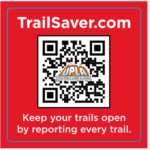Trail Canyon Travel Management Plan
This page is dedicated to providing updated information on the Trail Canyon Travel Management Plan, E Planning Project Number DOI-BLM-UT-P020-2021-0002-EA. We will post new resources as they become available, with the most recent posts appearing at the top of this page after the static resource links at the top of the page.
Preliminary Alternative Maps were released in January 2021 with the results of the scoping report. In that scoping report, there were only 19 comments submitted.
The next phase will be the release of the Draft EA, expected this summer. If Alternative B were selected, as it was in Moab, very important routes including the Barracks Trail, Poverty Wash, and Hell Dive Canyon to Lambs Point will be closed. We need a massive effort to get people out and report their trails using www.TrailSaver.com Don’t wait, there’s a lot of trails that will need protecting.
If you have information that you would like added, please email us at landuse@utahpla.com
UPLA Articles
UPLA Article On Writing Substantive Comments 03/10/2024
UPLA Article with Links to All Utah Travel Management Planning Information
BLM Resources
Interactive Map from Scoping Report with Prelimary Alternatives
Trail Canyon Scoping Report 2021
Trail Canyon Scoping Route Reports 2021
So What Do We Need To Do Now?
- Select an Area that has routes that are marked on the map as targeted for closure. Write down the route numbers.
- Go to the BLM Route Report, refer to the link above. You can use the Search Bar on the webpage to find the Route Report for your trail, generally it will be about 4 pages long. Print it out, and try to understand what their resource concerns are. How do you determine what things mean in the Route Report? Google should be able to give you answers to abbreviations in the report. For example, I googled “What is PFYC Class 5?” and “What are abbreviation T E S T in BLM route reports for negative impacts” and it gave me all the answers.
- Schedule time to go out and run the trail. Take your route report. Look for areas or conditions mentioned in the Route Report. Take photos along the route, especially noting any possible resource impacts they may have cited and think about alternatives when you’re on the trail.
- When you get home, use TrailSaver to draft your substantive comments on the route. Be as specific as you can. 2 or 3 paragraphs on a route is an ideal length, include photos and gpx tracks. Videos are not recommended because of the large file size. If Archeological or Paleontology is listed, you won’t get a specific answer as to where that concern is located, but you can ask questions about possible mitigations around the concern such as rerouting the trail, informational signing, barriers to narrow trail to prevent stopping, etc. It is ok to mention how long you’ve been using the trail, with whom, etc, but this should be like the dessert to your meal, not the main course.
- TrailSaver will email you a formatted draft of your report. You can edit, add to it or change it. When the BLM comment period opens, TrailSaver will send you another email with your report and more suggestions, along with instructions on how to submit reports to BLM.
Summary When you look at the comments required for one route, it seems like a lot, but when put in the scope of things, it might take you 20-30 minutes to write a good comment. Compare that to the fun you had running the trail, the people you enjoyed the company of on the trail, the overnight camping you did, and being able to enjoy this trail for generations to come and I hope you’ll agree it’s a good investment of your time. Please do your research and get out there and help save our trails!
